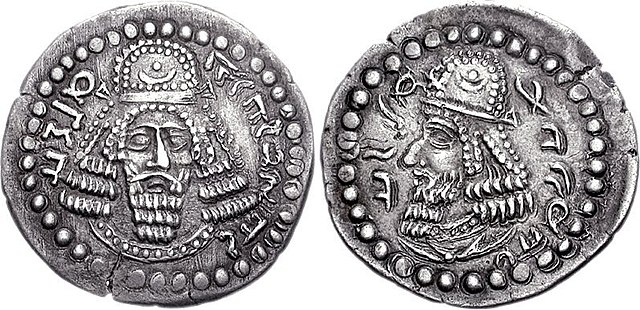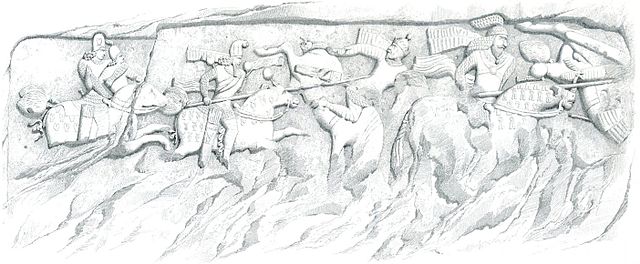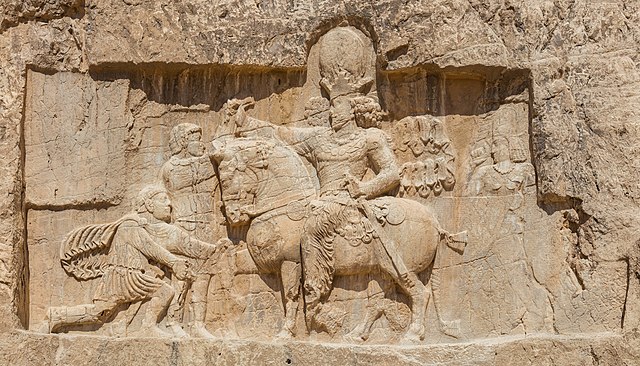Sasanian Armenia, also known as Persian Armenia and Persarmenia, may either refer to the periods in which Armenia was under the suzerainty of the Sasanian Empire or specifically to the parts of Armenia under its control such as after the partition of 387 when parts of western Armenia were incorporated into the Eastern Roman Empire while the rest of Armenia came under Sasanian suzerainty but maintained its existing kingdom until 428.
Persis, Parthia, Armenia. Rest Fenner, published in 1835
Illustration of Vahan Mamikonian.
The Sasanian Empire or Sassanid Empire, officially known as Eranshahr, was the last Iranian empire before the early Muslim conquests of the 7th to 8th centuries. Named after the House of Sasan, it endured for over four centuries, from 224 to 651, making it the second longest-lived Persian imperial dynasty after the Arsacids of the Parthian Empire.
Initial coinage of founder Ardashir I, as King of Persis Artaxerxes (Ardaxsir) V. c. 205/6–223/4 AD. Obv: Bearded facing head, wearing diadem and Parthian-style tiara, legend "The divine Ardaxir, king" in Pahlavi. Rev: Bearded head of Papak, wearing diadem and Parthian-style tiara, legend "son of the divinity Papak, king" in Pahlavi.
1840 illustration of a Sasanian relief at Firuzabad, showing Ardashir I's victory over Artabanus IV and his forces.
Rock relief of Ardashir I receiving the ring of kingship by the Zoroastrian supreme god Ahura Mazda.
Rock-face relief at Naqsh-e Rostam of Persian emperor Shapur I (on horseback) capturing Roman emperor Valerian (standing) and Philip the Arab (kneeling), suing for peace, following the victory at Edessa.






